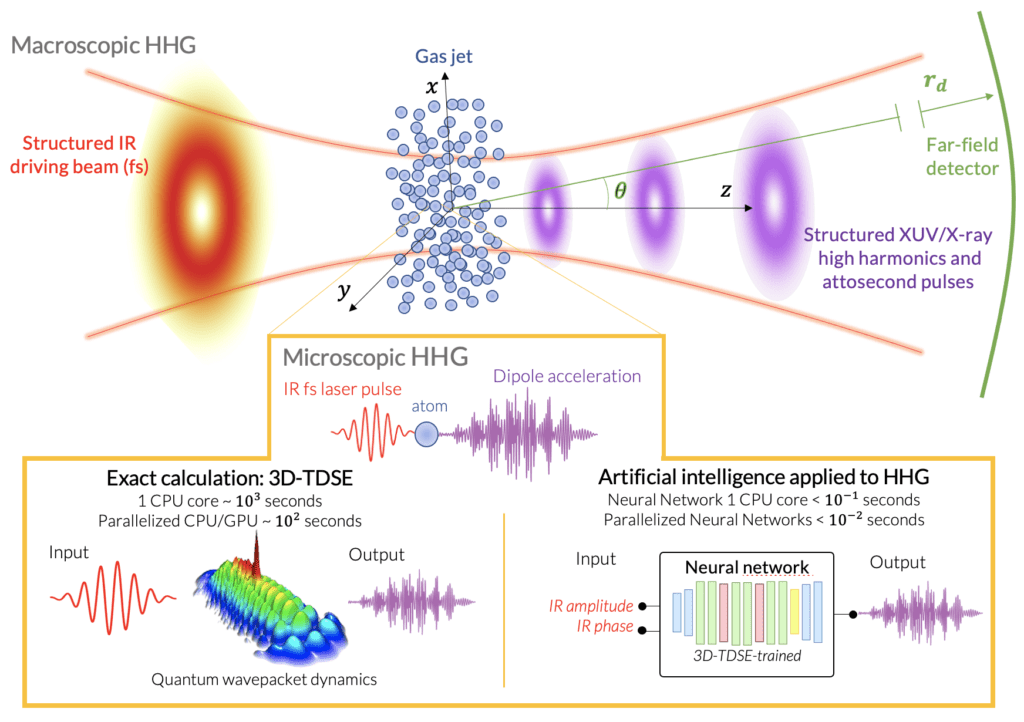Thanks to a process called “high-order harmonic generation” significant progress has been made in generating ultrashort X-ray pulses over the past few years, with a duration of a few attoseconds (equivalent to dividing a second into 1,000,000,000,000,000,000 parts). This extremely short duration is comparable to the time it takes for electrons to transfer between atoms, making these pulses exceptional tools for exploring high-speed physical phenomena.
The required experimental setup and desired characteristics of the light pulses vary depending on their application. While it is possible to simulate this process to understand and predict its behavior under different circumstances, performing these calculations requires an extremely long time, even on the world’s most powerful supercomputers. Therefore, it is common to resort to approximations that provide acceptable but improvable results.
However, this can be addressed with intelligence, specifically with Artificial Intelligence (AI). A recent study conducted by the Research Group in Laser Applications and Photonics (ALF) has shown that it is possible to use artificial neural networks to accelerate these simulations and obtain nearly immediate results with a level of accuracy that had not been achieved until now.

More information at:
José Miguel Pablos-Marín, Javier Serrano, Carlos Hernández-García, “Simulating macroscopic high-order harmonic generation driven by structured laser beams using artificial intelligence”, Computer Physics Communications, In Press – Journal Pre-proof (2023). https://doi.org/10.1016/j.cpc.2023.108823


Leave a Reply